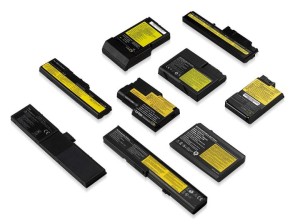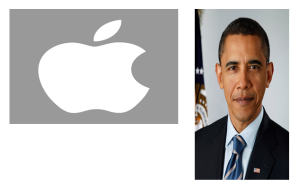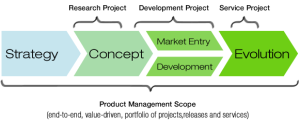Starbucks to Sell Burgers? A Retail Tenant-Patron and CX View
Original post: January 22, 2018 | GoogleScholar | Academia.edu
Starbucks CX Point-of-Sale Challenge: Intro
 I am not a coffee drinker, but I generally like the Starbucks brand from the business development (and the tenant-patron) perspective. As we know, three things matter in real estate – location, location, and location. Starbucks has done exceptionally well from the legacy retail standpoint: it has all the right locations to lure you inside. But when it comes to its tenant and customer experience, there may be room for improvement. I was “there” to see Starbucks become an American landmark of the worldwide coffee culture. Even if you are not in love with Starbucks coffee, chances are that you go to a Starbucks store every now and then – to use the free internet, to buy a bottle of water, or just because your friends decided to meet there before going to a concert. What can go wrong at a Starbucks in terms of tenant experience and retail customer experience? Or for that matter, how could you improve Starbucks point-of-sale systems to improve its overall CX and its global customer success?
I am not a coffee drinker, but I generally like the Starbucks brand from the business development (and the tenant-patron) perspective. As we know, three things matter in real estate – location, location, and location. Starbucks has done exceptionally well from the legacy retail standpoint: it has all the right locations to lure you inside. But when it comes to its tenant and customer experience, there may be room for improvement. I was “there” to see Starbucks become an American landmark of the worldwide coffee culture. Even if you are not in love with Starbucks coffee, chances are that you go to a Starbucks store every now and then – to use the free internet, to buy a bottle of water, or just because your friends decided to meet there before going to a concert. What can go wrong at a Starbucks in terms of tenant experience and retail customer experience? Or for that matter, how could you improve Starbucks point-of-sale systems to improve its overall CX and its global customer success?
The problem at hand has to do with ordering frozen Starbucks items such as sandwiches, wraps and quiches – not the ones that sit in the public-facing cooler, but the ones shown on the display behind glass and require a barista or a point-of-sale clerk to get one from somewhere behind the counter. When your in-store interaction takes place early in the morning, all is peachy because everything is in stock. But shortly after 10am, this changes, at which point inventories dwindle and the main way to find out if what you want is in stock is to get the clerk to shout across the room to ask someone else or to leave the register, walk over to the refrigerator, open the door, let some warm air inside, dig through several shelves of items to see if your item is physically present and, finally, come back and complete the order. How does this affect Starbucks customer experience? And how does Starbucks need to change this model if it is serious about selling you a great lunch or dinner? And for that matter, is Starbucks really competing with Mickey D’s for your lunch or dinner burger dollars?
And finally, CX aside, can we financially justify making tweaks to Starbucks point-of-sale systems to improve inventory tracking? Let’s talk about these fun things. And for those of you who share my respect for the Starbucks brand, let’s hope that the company is already working on a reliable fix.


 Here and there in my career, I have worked with software people. Whenever my modest inputs are required to help software developers build better digital products, I like to say this, among other things: “Let’s make this feature work like a drum!” This expression is not my own – I “inherited” it from a good friend who is a front-end developer, but it represents a principle in product design that I follow (more on that later). And believe it or not, it all started with cars and drums and LSD… as in
Here and there in my career, I have worked with software people. Whenever my modest inputs are required to help software developers build better digital products, I like to say this, among other things: “Let’s make this feature work like a drum!” This expression is not my own – I “inherited” it from a good friend who is a front-end developer, but it represents a principle in product design that I follow (more on that later). And believe it or not, it all started with cars and drums and LSD… as in  Is usability of portable devices better when their batteries can be removed on the fly? Definitely. As a business developer who has spent countless months on the road in my career, I am yet to find a way to justify preferring a portable power bank over a simple, removable battery. Still, there are many schools of thought on this topic – both regarding Apple’s products specifically and regarding
Is usability of portable devices better when their batteries can be removed on the fly? Definitely. As a business developer who has spent countless months on the road in my career, I am yet to find a way to justify preferring a portable power bank over a simple, removable battery. Still, there are many schools of thought on this topic – both regarding Apple’s products specifically and regarding  In my years of interacting with screens – computer displays, television sets and proprietary video hardware – of varying sizes and intended uses, I find one factor to have a much bigger role in retail customer experience and in general usability than the title of this post may suggest – aspect ratios. Over 20% of the world is using electronic displays or TV’s with wrong aspect ratio settings, and it turns out that this has deep physiological and psychological effects that affect the users, the patrons (in the landlord-retail context), the product manufacturers, and everyone in the marketing and IT sectors. Should anyone care about this problem? I have done some research to find a few interesting answers.
In my years of interacting with screens – computer displays, television sets and proprietary video hardware – of varying sizes and intended uses, I find one factor to have a much bigger role in retail customer experience and in general usability than the title of this post may suggest – aspect ratios. Over 20% of the world is using electronic displays or TV’s with wrong aspect ratio settings, and it turns out that this has deep physiological and psychological effects that affect the users, the patrons (in the landlord-retail context), the product manufacturers, and everyone in the marketing and IT sectors. Should anyone care about this problem? I have done some research to find a few interesting answers.